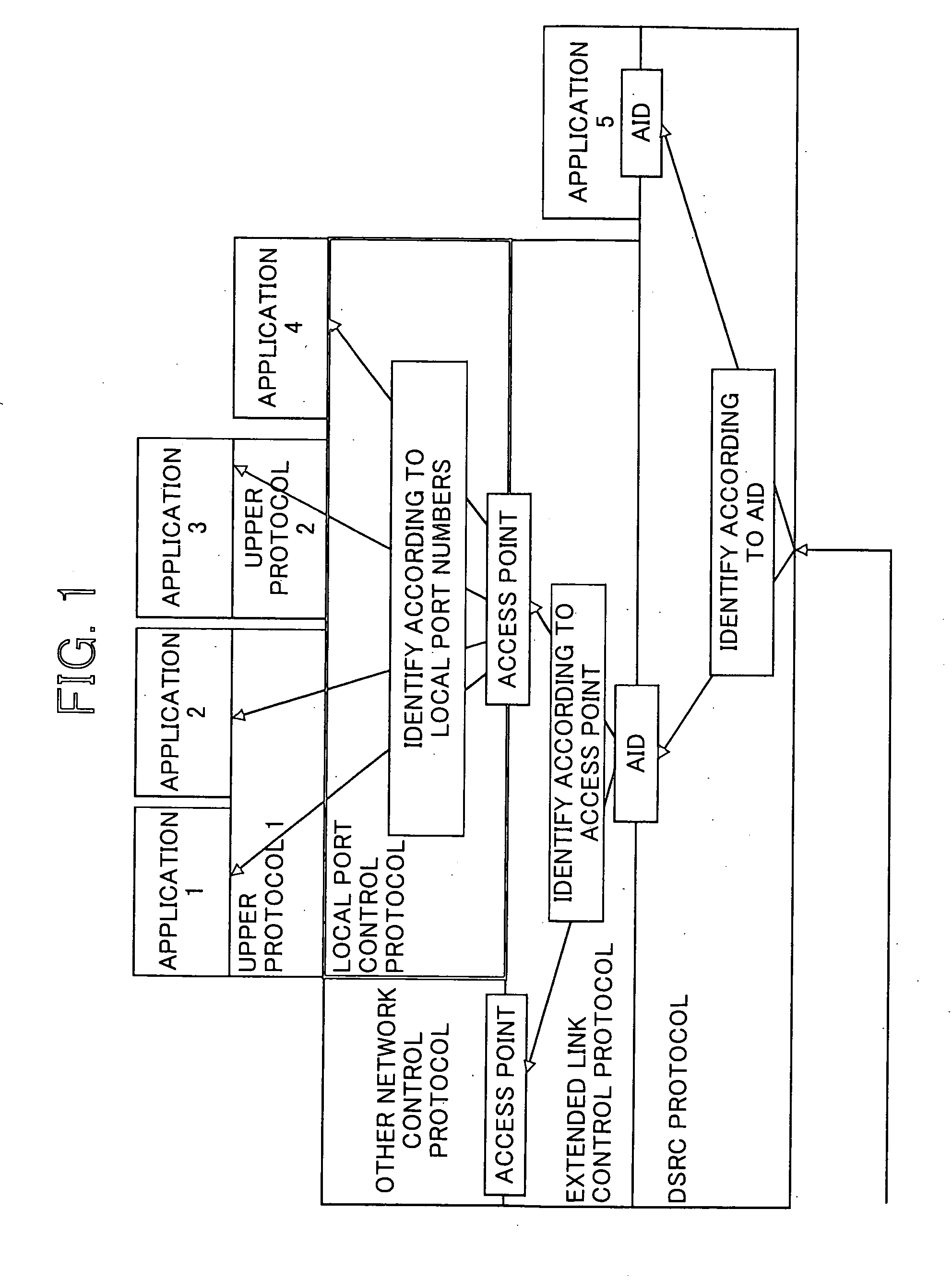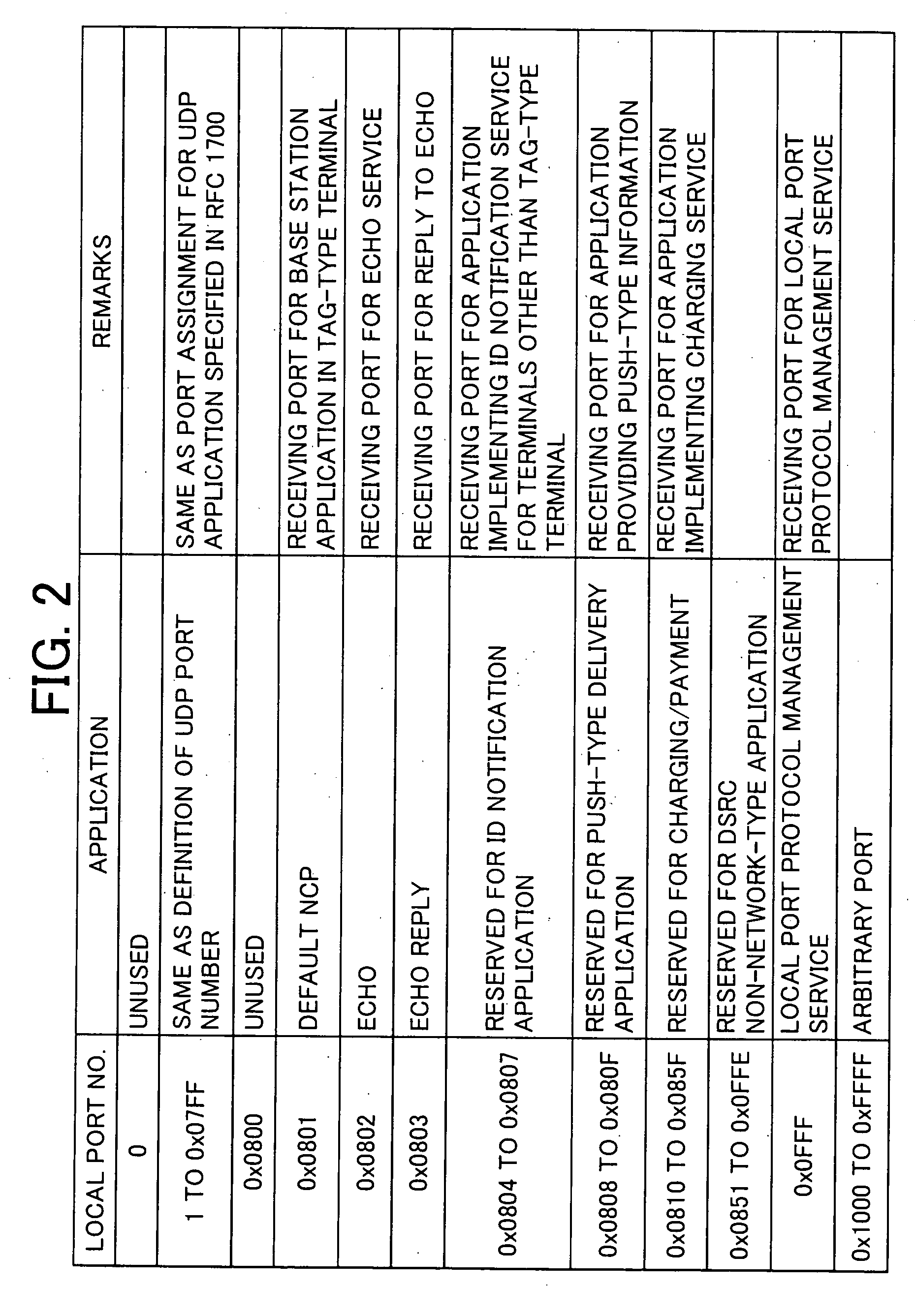Between-load-and-vehicle communication system
a communication system and load-and-vehicle technology, applied in the field of roadside-to-vehicle communication systems, can solve the problems of inability to apply the foregoing conventional art to applications that require high-capacity data communication with several tens of kilo bytes, and the application of the foregoing conventional art is difficult to apply, so as to improve the communication error rate, and reduce the overhead
- Summary
- Abstract
- Description
- Claims
- Application Information
AI Technical Summary
Benefits of technology
Problems solved by technology
Method used
Image
Examples
embodiment 1
[0081]FIG. 1 is a diagram illustrating a connection-identifying concept in a roadside-to-vehicle communication system according to Embodiment 1 of the present invention. In addition, FIG. 3 is a diagram illustrating an outline of the data flow in a roadside-to-vehicle communication system according to Embodiment 1 of the present invention. The basic structures of a base station system and a mobile station will be discussed referring to FIGS. 1 and 3.
[0082] Communication protocols utilized in the base station system and the mobile station are in a layer structure including the dedicated short range communication (DSRC) protocol (ARIB STD-T75), the application sub-layer extended link control protocol, which is a protocol enabling bidirectional communication (ASL-ELCP), a transfer service processing entity (the local port control protocol (LPCP: Local Port Control Protocol)), and a transaction management entity (the local port protocol (LPP: Local Port Protocol)); a plurality of appli...
PUM
 Login to View More
Login to View More Abstract
Description
Claims
Application Information
 Login to View More
Login to View More - R&D
- Intellectual Property
- Life Sciences
- Materials
- Tech Scout
- Unparalleled Data Quality
- Higher Quality Content
- 60% Fewer Hallucinations
Browse by: Latest US Patents, China's latest patents, Technical Efficacy Thesaurus, Application Domain, Technology Topic, Popular Technical Reports.
© 2025 PatSnap. All rights reserved.Legal|Privacy policy|Modern Slavery Act Transparency Statement|Sitemap|About US| Contact US: help@patsnap.com



